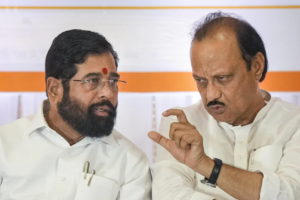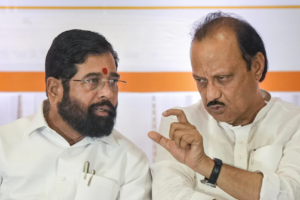The All Site Art of Immersion Crafting News Article for the Modern Digital Landscape

In an era saturated with fleeting information, In an era saturated with fleeting information, All Site stands as a testament to the enduring power of in-depth journalism. It offers readers a vital respite from the relentless news cycle, inviting them to delve into the nuances of a story, understand its intricate layers, and engage with its broader implications. For All Site from established media giants to emerging digital publishers, mastering this long-form format is essential for building credibility, fostering reader loyalty, and truly informing a discerning audience.
This guide explores the strategic and practical elements involved in crafting a compelling, transforming a mere report into an immersive journalistic experience.
1. The Genesis Identifying a Subject Worth Deep Diving
- Unfolding Crises with Deep Roots: A natural disaster’s aftermath, a protracted political conflict, or an economic downturn that has multifaceted origins and long-term consequences.
- Investigative Leads: Stories that expose systemic issues, corruption, or significant societal problems requiring extensive evidence gathering and multiple viewpoints.
- Emerging Trends with Broad Impact: Technological shifts, demographic changes, or cultural phenomena that are reshaping society in profound ways.
- Human-Interest Narratives with Wider Resonance: Individual stories that powerfully illustrate a larger societal challenge, triumph, or an underrepresented experience.
For instance, instead of a brief report on “Chennai’s water crisis,” All Site” The Decades-Long Battle for Water Security in Chennai Climate Change, Urbanization, and Policy Failures.” This shift in scope immediately signals the depth of inquiry.
2. The Foundation Meticulous Research and Unassailable Verification
The backbone of any long-form article is exhaustive and rigorous research. All Site you must go far beyond surface-level facts:
- Primary Source Dominance:
- Interviews: Conduct extensive, open-ended interviews with a diverse range of sources: policymakers, experts (academics, scientists, economists), affected individuals, eyewitnesses, community leaders, and even dissenting voices. Prepare detailed questions that encourage narrative and insight, not just “yes/no” answers. Record interviews (with consent) for accurate transcription. For our Chennai water crisis example, this would mean speaking with hydrologists, urban planners, residents of affected areas, government officials from the Water Supply and Sewerage Board, and farmers.
- Official Documents: Obtain and analyze government reports, committee findings, legislative records, judicial pronouncements, and policy papers. These provide official narratives and data.
- Data Analysis: Work with statistics, surveys, and scientific data. Don’t just quote figures; analyze trends, identify correlations, and explain their significance to the reader. Data visualization (charts, graphs) can enhance comprehension.
- On-the-Ground Reporting: If feasible, immerse yourself in the environment of your story. Observe, listen, and gather sensory details. For the water crisis, this might involve visiting dried-up reservoirs, talking to people at public taps, or documenting water delivery systems.
- Secondary Source Criticality:
- Consult reputable academic journals, non-partisan think tank reports, and archives of established media organizations for historical context, expert analysis, and different perspectives.
- Cross-Verification: Never rely on a single source, especially for contentious information. Corroborate facts across multiple, independent sources to ensure accuracy and build an unshakeable foundation of credibility.
- Fact-Checking is Non-Negotiable: Every name, date, statistic, quote, and claim must be meticulously verified. A single inaccuracy can undermine the entire article’s authority.
3. The Hook Crafting a Compelling Opening
While the traditional inverted pyramid places the most critical facts at the very top, a All Site often benefits from a more narrative or anecdotal lead that draws the reader into the story.
- Anecdotal Lead: Begin with a vivid scene, a personal story, or an impactful moment that encapsulates the larger issue. This humanizes the story and provides an immediate emotional connection. For the Chennai water crisis, you might start with the struggles of a family waiting for a water tanker under the scorching sun.
- Descriptive Lead: Paint a picture with words, setting the scene and atmosphere.
- Question Lead: Pose a thought-provoking question that the rest of the article will endeavor to answer.
- Delayed/Nut Graph Lead: Begin with a compelling anecdote or descriptive passage, followed by a “nut graph” (usually the 2nd or 3rd paragraph) that succinctly summarizes the “5 W’s and 1 H” and explains the broader significance of the story. This allows for a more literary opening without sacrificing essential information.
The goal is to immediately capture attention and make the reader eager to invest their time in reading the full, in-depth piece.
4. The Narrative Spine Structuring for Depth and Flow
All Site demands a sophisticated structure that guides the reader through complex information without overwhelming them. While the inverted pyramid offers a foundational principle (most important info generally upfront), the long-form allows for a more organic, multi-layered narrative.
- Thematic Sections and Subheadings: Break the article into logical, digestible sections using clear, informative subheadings (H2, H3, etc.). These act as signposts, improving readability and helping readers navigate the content.
- Example Sections for Chennai Water Crisis: “A City Thirsty: The Immediate Impact,” “Historical Roots: Decades of Dwindling Resources,” “Policy Pitfalls and Missed Opportunities,” “The Human Cost: Livelihoods and Health,” “Innovative Solutions: What’s Working and What’s Not,” “Looking Ahead: A Precarious Future?”
- Chronological Development (Where Applicable): For stories with a clear timeline of events (e.g., an investigation, a historical overview), a chronological approach can be highly effective. This helps readers follow the progression and understand cause-and-effect.
- Integrating Voices and Perspectives: Weave in direct quotes from your interviews seamlessly. Quotes should add new information, emotional resonance, expert analysis, or represent diverse viewpoints. Avoid “quote dumping”; instead, use quotes to illustrate points rather than simply state them. Always attribute clearly and precisely.
- Contextual Breadth and Depth: Provide ample background information. Explain jargon, elaborate on historical events, detail relevant scientific principles, or clarify political dynamics that are crucial to understanding the story. Assume your reader may have little prior knowledge of the intricacies.
- Data and Analysis: Incorporate compelling data and statistics, but always interpret them. Explain what the numbers mean, what trends they reveal, and why they matter to the narrative. Use data to bolster your arguments and provide empirical evidence.
- Vivid Descriptions and Sensory Details: Engage the reader’s imagination by using descriptive language. Describe scenes, people, and emotions with sensory details (sights, sounds, smells, feelings). This brings the story to life and creates an immersive experience.
- Narrative Arcs and Storytelling Techniques: While factual, a long-form news article can benefit from storytelling elements. Introduce “characters” (key individuals), build tension, present dilemmas, and explore resolutions or ongoing challenges.
- Addressing Counterarguments and Nuance: A comprehensive article acknowledges complexities and different sides of an issue. Fairly present legitimate counterarguments or alternative explanations. This demonstrates journalistic balance and strengthens your credibility.
- Transitional Flow: Ensure smooth transitions between paragraphs and sections. Use linking phrases (e.g., “in contrast,” “furthermore,” “despite this,” “consequently”) to maintain a logical progression of ideas and a cohesive narrative. Each paragraph should ideally contribute a distinct piece of information or argument to the overall story.
5. The Denouement A Powerful and Resonant Conclusion
The conclusion of a All Site should do more than just summarize. It provides a sense of closure, reiterates the significance of the story, and often looks to the future.
- Synthesize Key Findings: Briefly recap the most crucial takeaways or the central argument of your article, but avoid mere repetition. Frame it in a way that reinforces the depth of your exploration.
- Broader Implications: Discuss the wider significance of the issues explored. How does this specific story connect to global trends, national policies, or fundamental human challenges?
- Future Outlook/Unresolved Questions: Explore potential future developments, ongoing challenges, or what remains uncertain. This can leave the reader with a thought-provoking perspective or a sense of the continuing evolution of the situation. For the Chennai water crisis, this might involve discussing proposed long-term solutions, the need for citizen participation, or the looming threat of future droughts.
- Echo the Lead (Optional but Powerful): Sometimes, a subtle reference back to the anecdote or image used in your lead can provide a satisfying sense of narrative completeness, bringing the reader full circle.
- Avoid New Information or Opinions: The conclusion is not the place to introduce new facts or inject personal opinions. Maintain your objective journalistic stance.
6. The Final Scrutiny Editing and Refinement
The difference between a good All Site and a great one often lies in the editing process.
- Clarity and Conciseness: Eliminate redundancy, awkward phrasing, and unnecessary jargon. Every sentence should contribute to the overall message.
- Accuracy and Objectivity: Re-read with a critical eye, verifying All Site and ensuring the language remains neutral and unbiased. Check for any unintentional emotional language or loaded terms.
- Flow and Readability: Read the article aloud to catch awkward sentences, repetitive structures, or areas where the narrative falters. Ensure paragraphs are not excessively long and that there’s a good rhythm to the writing.
- Grammar, Spelling, and Punctuation: Meticulously proofread for all errors. Consider using professional editing tools or having a second set of eyes review the piece.
- Headline and Teaser: Craft a compelling headline and a concise “All Site” or teaser that accurately reflects the depth of the article and entices readers to click.
By embracing these principles of exhaustive research, thoughtful structuring, compelling storytelling, and rigorous editing, you can transform complex subjects into impactful, informative, and truly immersive All Site, establishing your site as a trusted source for in-depth journalism.stands as a testament to the enduring power of in-depth journalism. It offers readers a vital respite from the relentless news cycle, inviting them to delve into the nuances of a story, understand its intricate layers, and engage with its broader implications. For “All Site,” from established media giants to emerging digital publishers, mastering this long-form format is essential for building credibility, fostering reader loyalty, and truly informing a discerning audience.
This guide explores the strategic and practical elements involved in crafting a compelling All Site, transforming a mere report into an immersive journalistic experience.
1. The Genesis Identifying a Subject Worth Deep Diving
Not every news event warrants a All Site. The ideal topic for such an extensive piece possesses inherent complexity, ongoing relevance, and the capacity to reveal significant insights. Consider:
- Unfolding Crises with Deep Roots: A natural disaster’s aftermath, a protracted political conflict, or an economic downturn that has multifaceted origins and long-term consequences.
- Investigative Leads: Stories that expose systemic issues, corruption, or significant societal problems requiring extensive evidence gathering and multiple viewpoints.
- Emerging Trends with Broad Impact: Technological shifts, demographic changes, or cultural phenomena that are reshaping society in profound ways.
- Human-Interest Narratives with Wider Resonance: Individual stories that powerfully illustrate a larger societal challenge, triumph, or an underrepresented experience.
For instance, instead of a brief report on “Chennai’s water crisis,” a 2000-word article could explore “The Decades-Long Battle for Water Security in Chennai: Climate Change, Urbanization, and Policy Failures.” This shift in scope immediately signals the depth of inquiry.
2. The Foundation Meticulous Research and Unassailable Verification
The backbone of any long-form article is exhaustive and rigorous research. All Site, you must go far beyond surface-level facts:
- Primary Source Dominance:
- Interviews: Conduct extensive, open-ended interviews with a diverse range of sources: policymakers, experts (academics, scientists, economists), affected individuals, eyewitnesses, community leaders, and even dissenting voices. Prepare detailed questions that encourage narrative and insight, not just “yes/no” answers. Record interviews (with consent) for accurate transcription. For our Chennai water crisis example, this would mean speaking with hydrologists, urban planners, residents of affected areas, government officials from the Water Supply and Sewerage Board, and farmers.
- Official Documents: Obtain and analyze government reports, committee findings, legislative records, judicial pronouncements, and policy papers. These provide official narratives and data.
- Data Analysis: Work with statistics, surveys, and scientific data. Don’t just quote figures; analyze trends, identify correlations, and explain their significance to the reader. Data visualization (charts, graphs) can enhance comprehension.
- On-the-Ground Reporting: If feasible, immerse yourself in the environment of your story. Observe, listen, and gather sensory details. For the water crisis, this might involve visiting dried-up reservoirs, talking to people at public taps, or documenting water delivery systems.
- Secondary Source Criticality:
- Consult reputable academic journals, non-partisan think tank reports, and archives of established media organizations for historical context, expert analysis, and different perspectives.
- Cross-Verification: Never rely on a single source, especially for contentious information. Corroborate facts across multiple, independent sources to ensure accuracy and build an unshakeable foundation of credibility.
- Fact-Checking is Non-Negotiable: Every name, date, statistic, quote, and claim must be meticulously verified. A single inaccuracy can undermine the entire article’s authority.
3. The Hook Crafting a Compelling Opening
While the traditional inverted pyramid places the most critical facts at the very top, a All Site often benefits from a more narrative or anecdotal lead that draws the reader into the story.
- Anecdotal Lead: Begin with a vivid scene, a personal story, or an impactful moment that encapsulates the larger issue. This humanizes the story and provides an immediate emotional connection. For the Chennai water crisis, you might start with the struggles of a family waiting for a water tanker under the scorching sun.
- Descriptive Lead: Paint a picture with words, setting the scene and atmosphere.
- Question Lead: Pose a thought-provoking question that the rest of the article will endeavor to answer.
- Delayed/Nut Graph Lead: Begin with a compelling anecdote or descriptive passage, followed by a “nut graph” (usually the 2nd or 3rd paragraph) that succinctly summarizes the “5 W’s and 1 H” and explains the broader significance of the story. This allows for a more literary opening without sacrificing essential information.
The goal is to immediately capture attention and make the reader eager to invest their time in reading the full, in-depth piece.
4. The Narrative Spine Structuring for Depth and Flow
A 2000-word article demands a sophisticated structure that guides the reader through complex information without overwhelming them. While the inverted pyramid offers a foundational principle (All Site info generally upfront), the long-form allows for a more organic, multi-layered narrative.
- Thematic Sections and Subheadings: Break the article into logical, digestible sections using clear, informative subheadings (H2, H3, etc.). These act as signposts, improving readability and helping readers navigate the content.
- Example Sections for Chennai Water Crisis: “A City Thirsty: The Immediate Impact,” “Historical Roots: Decades of Dwindling Resources,” “Policy Pitfalls and Missed Opportunities,” “The Human Cost: Livelihoods and Health,” “Innovative Solutions: What’s Working and What’s Not,” “Looking Ahead: A Precarious Future?”
- Chronological Development (Where Applicable): For stories with a clear timeline of events (e.g., an investigation, a historical overview), a chronological approach can be highly effective. This helps readers follow the progression and understand cause-and-effect.
- Integrating Voices and Perspectives: Weave in direct quotes from your interviews seamlessly. Quotes should add new information, emotional resonance, expert analysis, or represent diverse viewpoints. Avoid “quote dumping”; instead, use quotes to illustrate points rather than simply state them. Always attribute clearly and precisely.
- Contextual Breadth and Depth: Provide ample background information. Explain jargon, elaborate on historical events, detail relevant scientific principles, or clarify political dynamics that are crucial to understanding the story. Assume your reader may have little prior knowledge of the intricacies.
- Data and Analysis: Incorporate compelling data and statistics, but always interpret them. Explain what the numbers mean, what trends they reveal, and why they matter to the narrative. Use data to bolster your arguments and provide empirical evidence.
- Vivid Descriptions and Sensory Details: Engage the reader’s imagination by using descriptive language. Describe scenes, people, and emotions with sensory details (sights, sounds, smells, feelings). This brings the story to life and creates an immersive experience.
- Narrative Arcs and Storytelling Techniques: While factual, a long-form news article can benefit from storytelling elements. Introduce “characters” (key individuals), build tension, present dilemmas, and explore resolutions or ongoing challenges.
- Addressing Counterarguments and Nuance: A comprehensive article acknowledges complexities and different sides of an issue. Fairly present legitimate counterarguments or alternative explanations. This demonstrates journalistic balance and strengthens your credibility.
- Transitional Flow: Ensure smooth transitions between paragraphs and sections. Use linking phrases (e.g., “in contrast,” “furthermore,” “despite this,” “consequently”) to maintain a logical progression of ideas and a cohesive narrative. Each paragraph should ideally contribute a distinct piece of information or argument to the overall story.
5. The Denouement A Powerful and Resonant Conclusion
The conclusion of a All Site should do more than just summarize. It provides a sense of closure, reiterates the significance of the story, and often looks to the future.
- Synthesize Key Findings: Briefly recap the most crucial takeaways or the central argument of your article, but avoid mere repetition. Frame it in a way that reinforces the depth of your exploration.
- Broader Implications: Discuss the wider significance of the issues explored. How does this specific story connect to global trends, national policies, or fundamental human challenges?
- Future Outlook/Unresolved Questions: Explore potential future developments, ongoing challenges, or what remains uncertain. This can leave the reader with a thought-provoking perspective or a sense of the continuing evolution of the situation. For the Chennai water crisis, this might involve discussing proposed long-term solutions, the need for citizen participation, or the looming threat of future droughts.
- Echo the Lead (Optional but Powerful): Sometimes, a subtle reference back to the anecdote or image used in your lead can provide a satisfying sense of narrative completeness, bringing the reader full circle.
- Avoid New Information or Opinions: The conclusion is not the place to introduce new facts or inject personal opinions. Maintain your objective journalistic stance.
6. The Final Scrutiny Editing and Refinement
The difference between a good All Site and a great one often lies in the editing process.
- Clarity and Conciseness: Eliminate redundancy, awkward phrasing, and unnecessary jargon. Every sentence should contribute to the overall message.
- Accuracy and Objectivity: Re-read with a critical eye, verifying all facts and ensuring the language remains neutral and unbiased. Check for any unintentional emotional language or loaded terms.
- Flow and Readability: Read the article aloud to catch awkward sentences, repetitive structures, or areas where the narrative falters. Ensure paragraphs are not excessively long and that there’s a good rhythm to the writing.
- Grammar, Spelling, and Punctuation: Meticulously proofread for all errors. Consider using professional editing tools or having a second set of eyes review the piece.
- Headline and Teaser: Craft a compelling headline and a concise “standfirst” or teaser that accurately reflects the depth of the article and entices readers to click.
By embracing these principles of exhaustive research, thoughtful structuring, compelling storytelling, and rigorous editing, you can transform complex subjects into impactful, informative, and truly immersive All Site, establishing your site as a trusted source for in-depth journalism.



 English
English Hindi
Hindi Kannada
Kannada Malayalam
Malayalam Tamil
Tamil Telugu
Telugu









